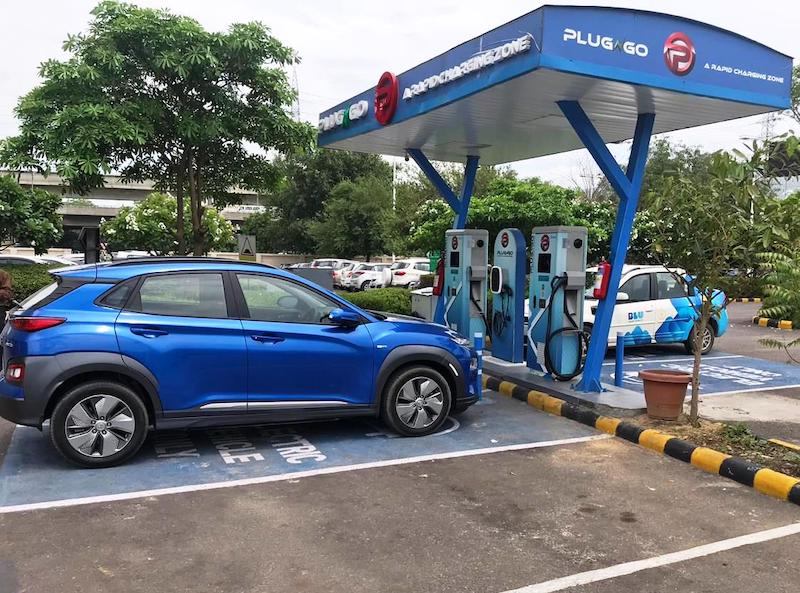Understanding EV Chargers: Key Insights and Benefits
As the world shifts towards more sustainable transportation, EV chargers are becoming increasingly significant. These essential components of the electric vehicle (EV) infrastructure play a crucial role in supporting the growing number of EVs on the road. In this guide, we’ll delve into the types of EV chargers, their benefits, and their impact on the environment and the future of mobility.
Types of EV Chargers
EV chargers are classified into three primary categories based on their charging speed and technology: Level 1, Level 2, and DC Fast Chargers. Each type serves a different purpose and offers varying levels of efficiency and convenience.
 (1).jpg)
1. Level 1 Chargers
Level 1 chargers are the most basic and widely used type. They operate using a standard 120-volt outlet, which is commonly found in households. This type of EV charger is simple to use but relatively slow, providing about 2 to 5 miles of range per hour of charging. While this is sufficient for overnight charging or short commutes, it is less ideal for those needing a quicker recharge.
2. Level 2 Chargers
Level 2 chargers offer a significant upgrade in charging speed. Operating on a 240-volt circuit, similar to that used by household appliances like dryers, these EV chargers provide 10 to 60 miles of range per hour of charging. The installation of a Level 2 EV charger usually requires a professional electrician to ensure proper setup and compliance with local electrical codes. This type is ideal for both residential and commercial applications, offering a good balance between charging speed and accessibility.
3. DC Fast Chargers
DC Fast Chargers, or Level 3 chargers, represent the most advanced and rapid charging technology available. These EV chargers deliver direct current (DC) directly to the vehicle’s battery, allowing for much faster charging compared to Level 1 and Level 2 chargers. With the ability to provide up to 100 to 350 miles of range in just 20 to 30 minutes, DC Fast Chargers are often located along highways and major routes to support long-distance travel and quick top-ups. Due to their complexity and cost, these chargers are generally found in public charging stations rather than residential settings.

Benefits of EV Chargers
The advantages of EV chargers extend beyond merely providing power to electric vehicles. They play a vital role in the broader EV ecosystem and offer several key benefits:
1. Supporting EV Adoption
The availability of reliable EV chargers is crucial for increasing the adoption of electric vehicles. A comprehensive network of chargers reduces range anxiety, making it more convenient for users to charge their vehicles. This accessibility encourages more individuals to consider EVs as a viable and practical option.
2. Environmental Impact
EV chargers contribute to reducing greenhouse gas emissions by facilitating the use of electric vehicles, which are generally more environmentally friendly than traditional gasoline-powered vehicles. As the electricity used to power these chargers increasingly comes from renewable sources, the environmental benefits will continue to grow.
3. Technological Advancements
The ongoing development of EV chargers reflects broader trends in technology and innovation. From faster charging speeds to smart charging solutions that optimize energy use, advancements in this field enhance the efficiency and convenience of electric mobility. Technologies such as wireless charging and vehicle-to-grid systems are also emerging, promising even greater improvements in the future.

Installation and Considerations
Installing an EV charger requires careful planning and consideration. For Level 1 chargers, the process is relatively straightforward, involving the use of a standard outlet. However, Level 2 and DC Fast Chargers require more complex installation procedures, including potential upgrades to the electrical system and obtaining necessary permits. It is advisable to work with a licensed electrician to ensure the installation is done safely and in compliance with local regulations.
EV chargers also need to be strategically placed to maximize their utility. For residential installations, chargers should be positioned in accessible locations such as garages or driveways. In commercial settings, placement should account for high traffic areas and ease of use for customers.
Conclusion
EV chargers are integral to the transition towards electric vehicles and sustainable transportation. By understanding the different types of chargers and their benefits, consumers and businesses can make informed decisions about their charging infrastructure. As the EV market continues to grow, the development and deployment of efficient and accessible EV chargers will be key to supporting this shift and advancing the future of mobility.
Also Read: Past, present & future of EVs: Advanced battery technology is key to success